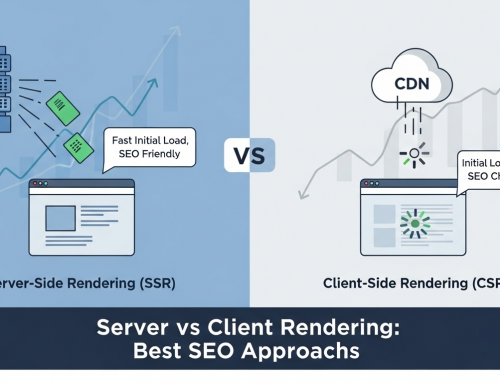A Technical SEO Audit is like a health check-up for your website’s foundation. It involves meticulously reviewing your site’s technical elements to ensure search engines can efficiently crawl, index, and understand your content, ultimately impacting your visibility in search results. Unlike on-page SEO (which focuses on content and keywords) or off-page SEO (which deals with backlinks), technical SEO ensures your site’s structure isn’t hindering its performance.
Regular technical audits are crucial because search engine algorithms evolve, websites grow and change, and small technical issues can snowball into significant ranking problems.
Essential Tools for a Technical SEO Audit
Before you begin, arm yourself with these indispensable tools:
- Google Search Console (GSC): Absolutely vital. Provides direct insights from Google on crawl errors, indexing status, Core Web Vitals, mobile usability, security issues, and sitemap status. (Free)
- Google Analytics (GA4): While not a direct SEO tool, it helps identify performance issues and user behavior related to site speed and engagement. (Free)
- Screaming Frog SEO Spider: A powerful desktop-based crawler that emulates how search engines crawl your site. It can identify broken links, redirect chains, duplicate content, missing titles/descriptions, and more. (Free for up to 500 URLs, paid for more)
- Ahrefs / Semrush / Moz Pro / SEO PowerSuite: Comprehensive SEO suites that offer site audit features, backlink analysis, keyword research, and competitive analysis. (Paid, with limited free trials)
- Google Lighthouse: Built into Chrome’s developer tools, it audits performance, accessibility, best practices, and SEO for individual pages. (Free)
- PageSpeed Insights: Analyzes the speed performance of your web pages on both mobile and desktop, based on real-world data and lab data. (Free)
- Mobile-Friendly Test (Google): Quickly checks if a page is considered mobile-friendly by Google. (Free)
- Robots.txt Tester (GSC): Helps you test your robots.txt file to ensure you’re not inadvertently blocking important pages. (Free)
- Rich Results Test (Google): Checks if your structured data (schema markup) is correctly implemented and eligible for rich results. (Free)
- Browser Extensions:
- Redirect Path (Ayima): Quickly shows redirect chains.
- View Rendered Source: Compares raw HTML with how a browser renders it, useful for JavaScript-heavy sites.
The Technical SEO Audit Checklist: Step-by-Step
Here’s a detailed breakdown of the key areas to investigate during a technical SEO audit:
Phase 1: Crawlability & Indexability (Can Search Engines Find & Read Your Site?)
This is the most critical phase. If search engines can’t crawl or index your site, nothing else matters.
- Crawl Errors:
- GSC > Index > Pages > “Not indexed” tab: Look for “Server error (5xx)”, “Redirect error”, “Not found (404)”, “Blocked by robots.txt”, “Blocked by ‘noindex'”, “Discovered – currently not indexed”, “Crawled – currently not indexed.” Address these immediately.
- Screaming Frog: Crawl your site and identify 4xx (client errors, like 404s) and 5xx (server errors) status codes.
- Robots.txt File:
- Purpose: This file tells search engine bots which parts of your site they shouldn’t crawl.
- Check: Is it present? Is it correctly configured? Is it accidentally blocking important pages or entire sections of your site? Use GSC’s
robots.txt Tester.
- Meta Robots Tag & X-Robots-Tag (Noindex/Nofollow):
- Purpose: These HTML tags (or HTTP headers) provide instructions at the page level.
noindextells search engines not to add a page to their index;nofollowtells them not to follow links on that page. - Check: Use Screaming Frog to identify pages with
noindexornofollowtags. Ensure these are applied intentionally (e.g., to thank-you pages, internal search results, staging sites). Accidentalnoindextags are a common cause of de-indexing.
- Purpose: These HTML tags (or HTTP headers) provide instructions at the page level.
- XML Sitemaps:
- Purpose: An XML sitemap lists all the important pages on your site that you want search engines to crawl and index.
- Check:
- GSC > Index > Sitemaps: Is your sitemap submitted? Are there any errors? Does it reflect all your important pages?
- Verify Content: Does the sitemap only include canonical, indexable URLs (no
noindexor 404s)? - Last Modified Date: Is it up-to-date?
- Size Limits: For very large sites, ensure your sitemap is split into multiple files if it exceeds 50,000 URLs or 50MB.
- Canonicalization:
- Purpose: The
rel="canonical"tag tells search engines which version of a page is the “master” version, preventing duplicate content issues. - Check: Use Screaming Frog to identify pages with
rel="canonical"tags. Are they pointing to the correct, preferred version? Are there self-referencing canonicals? Are there multiple canonical tags on one page (which can cause issues)? - Common Issues: HTTPS vs. HTTP, www vs. non-www, trailing slashes, URL parameters creating duplicate content.
- Purpose: The
Phase 2: Site Speed & Performance (How Fast is Your Site?)
Speed is a direct ranking factor and crucial for user experience.
- Core Web Vitals:
- GSC > Experience > Core Web Vitals: Review both “Mobile” and “Desktop” reports. Identify URLs with “Poor” or “Needs improvement” status.
- PageSpeed Insights: Test key pages (homepage, category pages, popular product/article pages) to get detailed recommendations for LCP (Largest Contentful Paint), FID (First Input Delay), and CLS (Cumulative Layout Shift).
- Image Optimization:
- Check: Are images properly compressed? Are they using modern formats (WebP)? Are they lazy-loaded? Are they correctly sized (not serving huge images that are then scaled down)?
- JavaScript & CSS Optimization:
- Minification: Are CSS and JavaScript files minified to reduce their size?
- Render Blocking Resources: Are there large JavaScript or CSS files blocking the rendering of your page?
- Unused Code: Remove unnecessary JavaScript or CSS.
- Server Response Time:
- Check: Is your server slow? This can be a hosting issue. PageSpeed Insights or tools like GTmetrix can highlight this.
- Caching:
- Check: Is browser caching enabled? Is server-side caching configured for dynamic content?
Phase 3: Mobile-Friendliness (Is Your Site Usable on All Devices?)
Mobile-first indexing means Google primarily uses the mobile version of your site for ranking.
- Mobile Usability Report (GSC): Identify any errors like “Content wider than screen” or “Clickable elements too close together.”
- Google’s Mobile-Friendly Test: Quickly test specific URLs.
- Responsive Design: Ensure your site adapts gracefully to different screen sizes. Use Chrome’s developer tools (device toolbar) to test various resolutions.
- Viewport Meta Tag: Ensure the
tag is present in your HTML.
Phase 4: Site Architecture & Navigation (Is Your Site Easy to Navigate?)
A logical site structure helps both users and search engines.
- Flat Architecture: Aim for a relatively “flat” hierarchy, meaning important pages are accessible within a few clicks from the homepage.
- Internal Linking:
- Check: Do your important pages have sufficient internal links pointing to them? Are internal links using descriptive anchor text?
- Screaming Frog: Analyze internal link distribution and identify orphaned pages (pages with no internal links).
- Breadcrumbs:
- Check: Are breadcrumbs implemented on relevant pages? Do they use schema markup (e.g.,
BreadcrumbList)?
- Check: Are breadcrumbs implemented on relevant pages? Do they use schema markup (e.g.,
- URL Structure:
- Check: Are URLs clean, descriptive, and keyword-rich where appropriate? Avoid long, messy URLs with excessive parameters.
- Consistency: Are URLs consistent (e.g., all lowercase, consistent use of hyphens vs. underscores)?
Phase 5: Structured Data (Schema Markup)
Schema markup helps search engines understand the context and meaning of your content, leading to rich results (rich snippets).
- Rich Results Test (Google): Test key pages to see if your schema is valid and eligible for rich results.
- GSC > Enhancements: Check for reports on specific schema types (e.g.,
FAQ,HowTo,Product,Recipe,Review snippet) and address any errors. - Relevant Schema: Are you using the most relevant schema types for your content (e.g.,
Productfor e-commerce,Articlefor blog posts,LocalBusinessfor local businesses)?
Phase 6: HTTPS (Security)
HTTPS is a ranking signal and essential for user trust.
- Check: Is your entire site served over HTTPS?
- Mixed Content Warnings: Are there any mixed content issues (HTTP resources loading on an HTTPS page), which can lead to security warnings for users? Screaming Frog can help identify these.
- Redirects: Are all HTTP versions of your pages properly 301-redirected to their HTTPS counterparts?
Phase 7: Duplicate Content & Content Quality Issues
Technical issues can lead to unintended duplicate content.
- Duplicate Content:
- Screaming Frog: Identify duplicate page titles, meta descriptions, and low word count pages.
- Canonical Tags: (Re-check, as covered in Crawlability) Ensure canonical tags are correctly implemented to consolidate ranking signals for similar pages.
- Pagination: Ensure paginated series are correctly handled with
rel="next"/rel="prev"(though Google has stated they no longer use these, it’s good for discoverability) or canonicalizing to the “view all” page.
- Thin Content / Low Quality Content:
- Identify: Look for pages with very little unique content (e.g., old category pages with no products, short blog posts).
- Action: Consider expanding, consolidating, or
noindexing/redirecting these pages.
Phase 8: Broken Links & Redirects
These impact user experience and can waste crawl budget.
- Broken Internal Links:
- Screaming Frog: Identify 4xx errors from internal links. Fix these immediately.
- Broken External Links:
- Screaming Frog: Identify 4xx errors from external links. Update or remove them.
- Redirect Chains & Loops:
- Screaming Frog / Redirect Path extension: Identify long redirect chains (e.g., A > B > C) or redirect loops (A > B > A), which slow down page loading and waste crawl budget. Implement direct 301 redirects (A > C).
Phase 9: International SEO (If Applicable)
For sites targeting multiple languages or regions.
- Hreflang Tags:
- Purpose: Tells search engines about localized versions of your content.
- Check: Are
hreflangtags correctly implemented (bidirectional, correct language/region codes)? Are there any errors reported in GSC? Screaming Frog can also crawl these.
- Geotargeting (GSC): If you use country-specific subdomains/directories, ensure correct geotargeting is set in GSC.
Reporting & Prioritization
Once you’ve collected all the data:
- Compile Findings: Organize your findings into a comprehensive report, categorized by severity and type of issue. Use screenshots and examples where helpful.
- Prioritize Issues: Not all issues are equally urgent. Prioritize based on:
- Severity: Critical (e.g., widespread
noindexerrors, major crawl errors) vs. Moderate (e.g., slow page speed) vs. Minor (e.g., broken external links). - Impact: How likely is this issue to affect rankings, traffic, or user experience?
- Effort: How difficult or time-consuming is it to fix?
- Quick Wins: Start with easy-to-fix issues that can yield immediate results.
- Severity: Critical (e.g., widespread
- Create Actionable Recommendations: For each identified issue, provide clear, specific steps on how to fix it, who is responsible, and the expected outcome.
- Share with Stakeholders: Present your findings and recommendations to developers, content teams, and management.
Conclusion
A technical SEO audit isn’t a one-time task; it’s an ongoing process. The digital landscape is constantly changing, and regular audits (quarterly or bi-annually, depending on site size and dynamism) ensure your website’s technical foundation remains solid. By meticulously checking these elements, you’ll ensure search engines can effectively discover, understand, and rank your content, paving the way for improved organic visibility and sustained online success.





